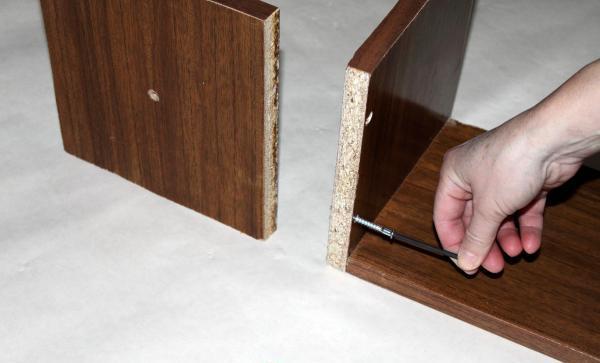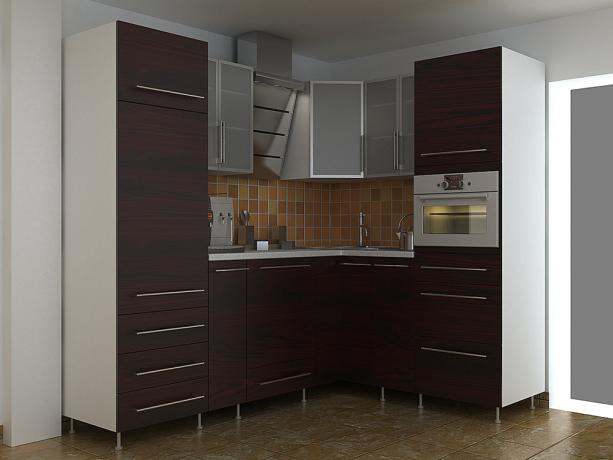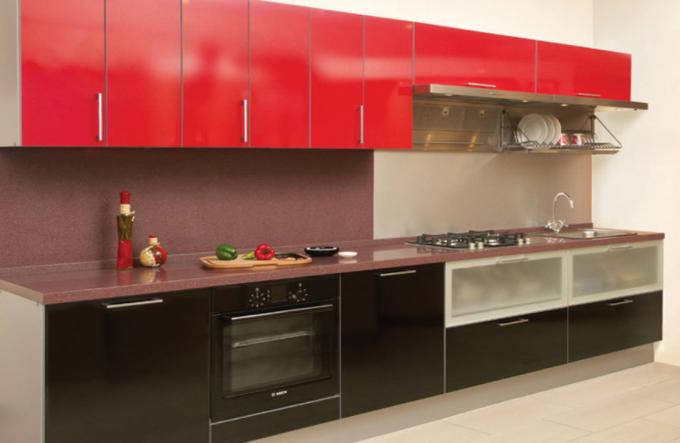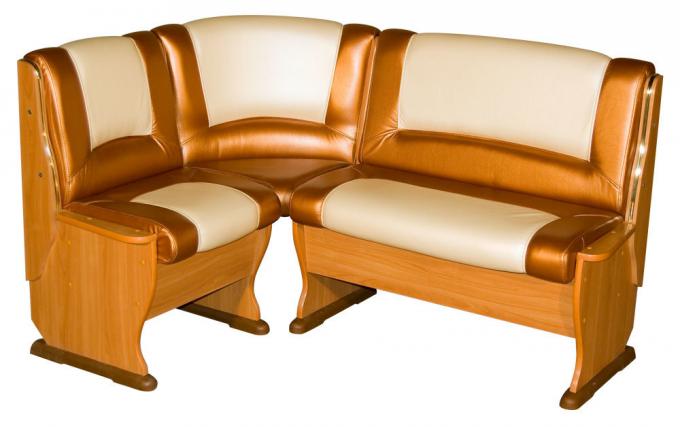Content
- 1 Benefits
-
2 Range of corner designs
- 2.1 Four options for corner shelves
- 2.2 Materials
- 3 We make a shelf ourselves in 8 steps
- 4 Finally
Corner kitchen shelves are one of the most popular options for organizing storage places for various utensils. In this material, we will tell you why corner structures are so good and what is their range. But most importantly, you will learn how to make an unusual and stylish kitchen shelf yourself.

Corner shelves are often a replacement for headset top cabinets
Benefits
A corner shelf in the kitchen can become not only a decorative, but also a functional element of space. It has a number of advantages that will make you at least think about purchasing or creating such a structure with your own hands.

The ability to accommodate a sufficiently large amount of utensils is one of the main advantages of the corner structure.
- Compactness. Kitchen corner shelves take up a minimum of space, so that they will be quite appropriate even in a small kitchen.
- Visual lightness. Such designs, unlike the headset wall cabinets, do not look heavy and do not visually overload the space.

Unlike the top row of the headset, the kitchen corner shelf does not burden the space
- Decorative component. By choosing the right model and material for the shelf, it can organically fit into almost any decor.
- Practicality. Finding the item you need on the corner shelf is easy. So there you can easily arrange the kitchen utensils that you use most often.
- Functionality. Corner shelves in the kitchen are also good because they make the most of the corner of the room, which could simply be empty without them.

Such designs allow you to make the most of the corner of the room.
Range of corner designs
The range of shapes, as well as materials for corner shelves, is quite extensive. We'll look at it in more detail in this section.

Among the varieties of products, there are simple shelves, options with lighting and additional drawers.
Four options for corner shelves
Designers never cease to amaze users with interesting shapes and unusual solutions. Still, the most popular are 4 types of corner shelves: simple, lattice, backlit and with drawers. Let's consider them in more detail.

Simple shelves are the most popular
- Option 1. Simple shelf. The most laconic option, which is very popular with home craftsmen. It is best to hang such open shelves between the two upper cabinets of the headset or make a small rack out of them.
- Option 2. Lattice. The most open and visually lightweight design. Most often it is placed in the corner above the sink, using it as a dish drainer. This is the best option for decorating a modern or high-tech kitchen.

Instead of the lattice option, you can use a product made of a solid sheet of metal
- Option 3. Backlit. It is best to use this design if you plan to store various accessories on the shelf. As lighting, you can use LED strip, spotlights or stylish small sconces.
- Option 4. With drawers. This corner kitchen shelf is particularly functional. It will be convenient to store your favorite spices or small kitchen accessories in small drawers of the structure.

If you could not find a shelf with drawers, you can store the seasonings as shown in the photo.
Materials
Several materials at once are considered optimal for the manufacture of corner structures for the kitchen. Let's dwell on them in more detail.
- Solid wood. The price of corner shelves for a kitchen made of wood is quite high, which is primarily due to their natural origin. You can use oak, pine, beech or birch as a base for the shelf.

Solid wood options are highly durable and have excellent decorative properties
- Particleboard / MDF. Perhaps the most popular materials for the manufacture of various kitchen furniture. They are made on the basis of natural wood, which is almost processed into dust and compressed. The binder is usually formaldehyde resins. However, in MDF, lignin is more often used for the connection, and the resin serves as a supplement.
- Metal. These corner kitchen shelves are distinguished not only by their stylish appearance, but also by their durability. They are covered with a special polymer paint, which prevents the formation of corrosion on the product.

The special composition with which the surface is coated prevents corrosion
- Glass. As for this type of miniature shelving, they look light and natural, but at the same time they have a good margin of safety. A sheet with a thickness of about 8 mm is able to withstand the same weight as a corner shelf for a MDF kitchen, but of greater thickness.

Despite the apparent lightness, products made of sealed glass can withstand high loads
We make a shelf ourselves in 8 steps
As mentioned above, the corner shelf for the kitchen is quite simple to design and thanks to this section you can make sure of it. We suggest you make an interesting corner structure with your own hands.

Based on such a sketch, you can get a fairly original product.
To create a shelf, you will need to draw an approximate sketch with measurements and a drawing of the number of elements you need. An ordinary furniture board will act as the basis of the design.
Illustration |
Instructions for action |
 |
Step 1. Markup. According to the sketch created on the furniture board, mark the necessary parts. If the canvas is light, then you can do this with a pencil. On a dark surface, the contours can be marked with a clerical knife. |
 |
Step 2. Saw cut. Using a jigsaw and a fine-toothed saw blade, cut out all the necessary elements. |
 |
Step 3. Making holes. Drill holes for confirmation in the cut plates. First, create holes directly on the slab itself, and then drill holes through them in the element supporting them. |
 |
Step 3. Creating a base for fastening. On the end side of the sheets, drill holes for fastening the structure to the wall. You will do this with dowel-nails 6x80 mm. |
 |
Step 4. Decorating edges. Remove sawdust and dust from all edges. Apply edging tape to the edges and glue it with a hot iron. |
 |
Step 5. Cleaning the ends. When the edge is glued on, rub over the surface with fine emery paper. |
 |
Step 6. Assembling the product. According to the numbered diagram you have drawn, start assembling the shelf. Use a hex wrench to screw in the confirmations. |
 |
Step 7. Shelf mount. Place the shelf against the wall and mark the places for the fasteners on it. It is better to drill them with a special drill for concrete. |
 |
Step 8. Final stage. Fix the shelf to the wall with dowels. Disguise their hats with decorative plugs. |
If desired, your corner kitchen shelf can be painted in any color that will look organic in your kitchen. We also offer you to watch the video in the article, from which you will learn about another simple way to create an original shelf.
Finally
We told you about the main advantages of corner structures, their varieties and materials for their manufacture. You also learned how to independently build an unusual and stylish shelf that will become a real decoration of the kitchen.
Read also the article “How to choose wall shelves for the kitchen”.


